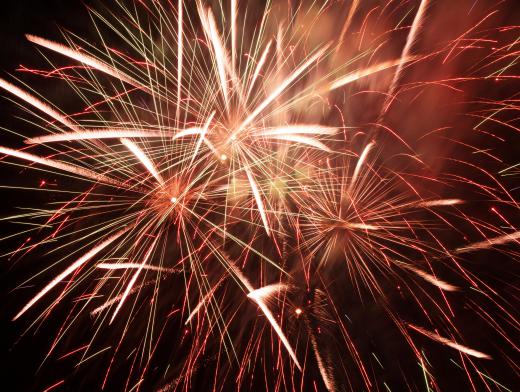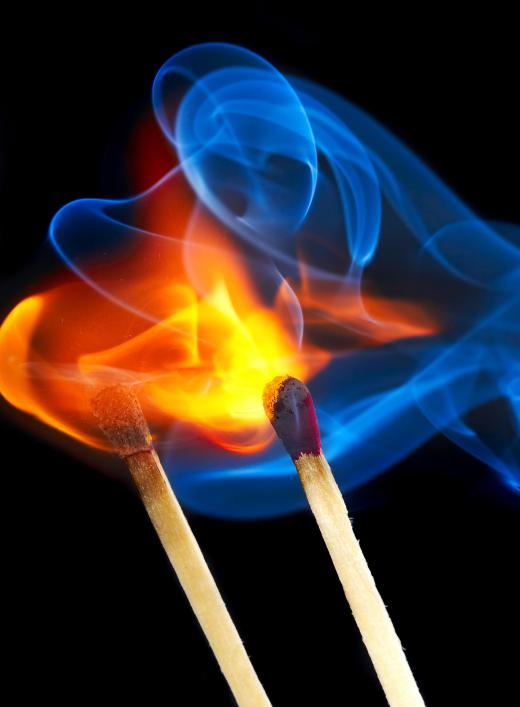What Are Exothermic Reactions?
Phase changes in matter are broken into two basic categories: endothermic and exothermic. Exothermic means "outside heat" in Greek, as opposed to endothermic's "inside heat." Endothermic reactions need heat, or energy, for new chemical bonds to be formed, such as when an ice cube is melted into a liquid then boiled into vapor. Exothermic reactions, on the other hand, create more energy than what is needed to facilitate them, causing the temperature immediately around the reaction to rise. This happens when rain is formed in a cloud and even when rain freezes into ice on the ground.
Some of the most illustrative exothermic reactions involve flames. Matches, campfires, fireworks, and rockets employ these reactions to produce energy used for a variety of purposes. Many facilitate endothermic reactions like making bread, cooking soup or warming the hands. Exothermic reactions don't just give off heat, though; they often require at least an initial supply of energy that provides what is referred to as the energy of activation. In exothermic reactions, however, the energy invested will always be less than the total energy produced; the spark will never be greater than the flame.

Other reactions of this kind are harder to experience. When rust forms on metal, another common exothermic reaction, it doesn't appear that any heat is being given off by the process. Heat has been released, however; over several hours, in just the right conditions of moisture, light and temperature, the mingling of iron and oxygen produces iron oxide and a modicum of heat.

Scientists use an instrument called a calorimeter to gauge how much heat is produced by a phase change or chemical reaction. This involves conducting the reaction in a water bath to gauge the temperature change produced. The results indicate whether a given reaction is endothermic or exothermic.
Chemistry teachers often employ one or more of several carefully supervised experiments to illustrate the principles of exothermic reactions. The lesson can be as simple as lighting a match and explaining how a spark ignites an exothermic reaction between sulfur and oxygen to produce heat. Another common experiment involves mixing water and calcium chloride, a deicing agent also used in portable heating packs, then measuring the amount of heat produced by the reaction.

Many forensic scientists study exothermic reactions exhaustively. First they must learn how various chemical reactions occur and how much heat is produced. As investigators, this knowledge better equips them to discover what caused a fire or explosion — and determine how best to extinguish them in the future.
AS FEATURED ON:
AS FEATURED ON:













Discussion Comments
My sister is a chemistry teacher, and she used the examples of ice melting and water freezing to teach her class about exothermic reactions. She was very surprised at how interested her students were about this topic when they were able to see hand-on what it is all about.
Exothermic reactions is a very interesting topic for kids that love science. When I was in school, I remember my chemistry teacher doing experiments in class that focused on exothermic reactions. It was this class that led me to focus on science and chemistry in college.
Post your comments